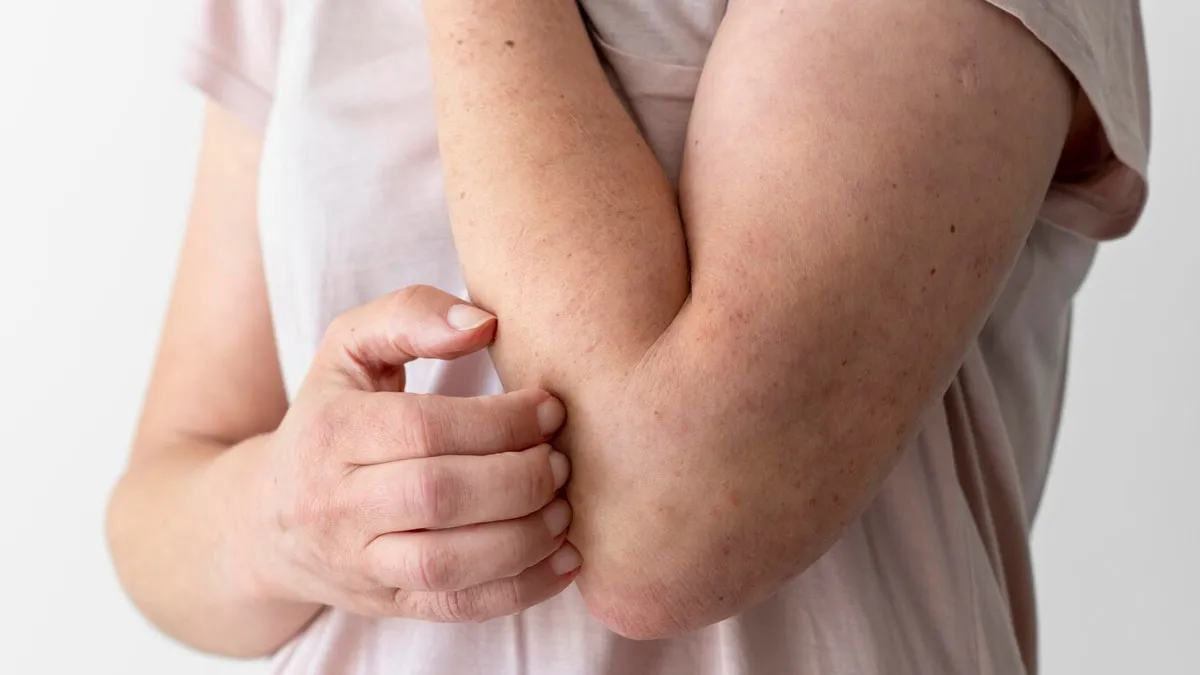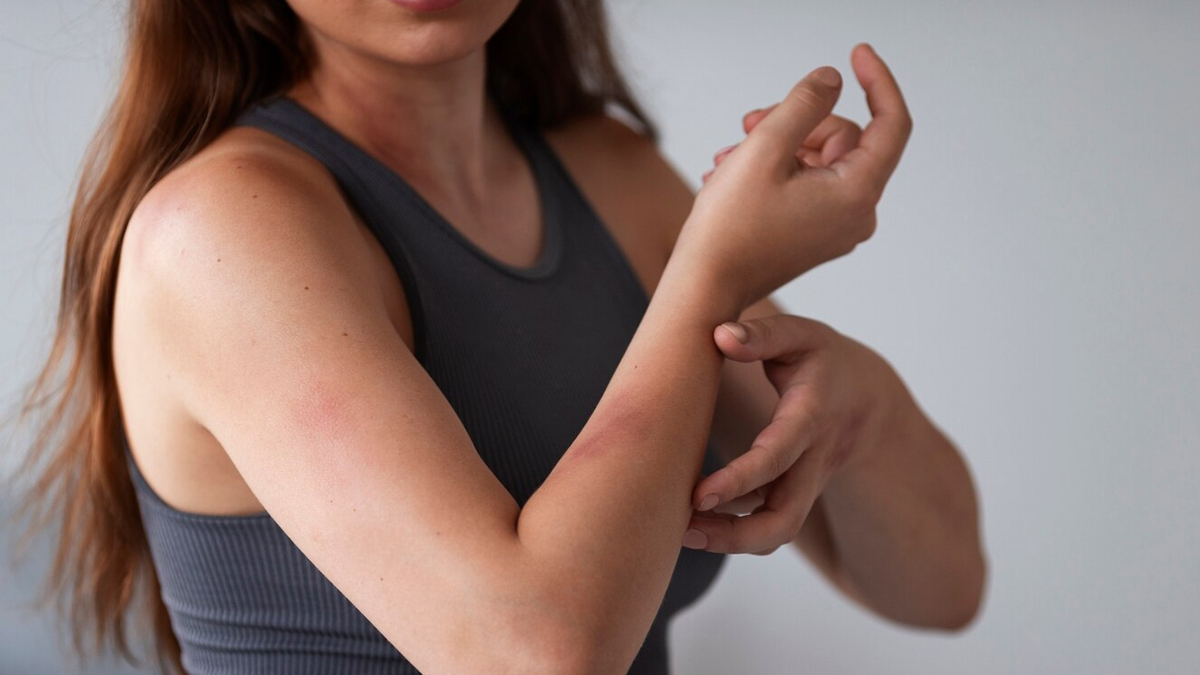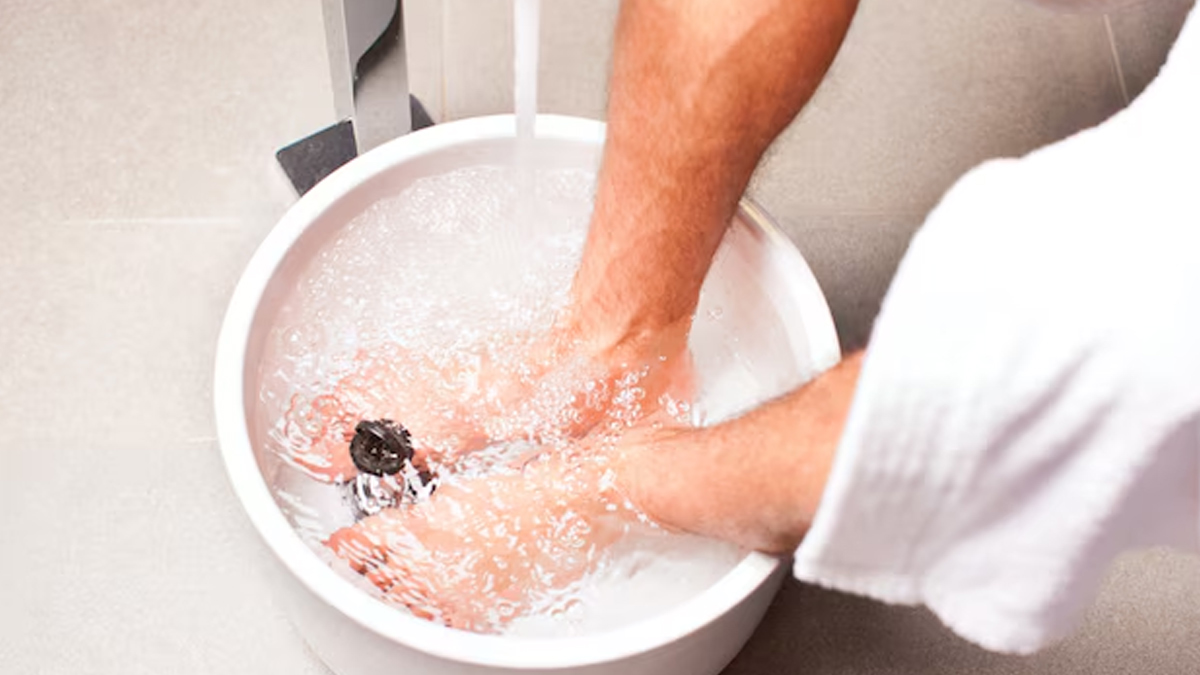
Have you ever slipped into a damp T-shirt after the gym or worn slightly wet clothes on a rainy day, only to find your skin itching or breaking out in red patches later? It’s one of those things we tend to brush off as a minor irritation, but those rashes are your skin’s way of telling you it’s not happy. Damp clothes don’t just feel uncomfortable; they create the perfect storm of moisture, heat, and friction that can lead to fungal infections, irritation, and even painful flare-ups if ignored.
Table of Content:-
Why Damp Clothes Irritate Your Skin
Damp clothes are the perfect setting for irritation because they trap moisture, heat, and friction against your skin. All three, in combination, can cause:

- Fungal and bacterial growth: Fungi (such as Candida and Malassezia) and bacteria breed in moist environments, leading to infection or rashes.
- Chafing and friction: Wet fabric chafes more roughly against the skin, disrupting its protective barrier.
- Allergic reactions: Residues in detergents become more irritating when clothing is damp and may cause contact dermatitis in sensitive skin.
These rashes often show up in areas where clothing fits snugly, such as underarms, inner thighs, waistbands, or under sports bras, since moisture accumulates and friction is increased there.
According to a 2008 study, skin hydration massively increases friction against textiles: dry skin had low friction, while completely wet skin saw double the friction. This can lead to micro-abrasions, redness, and skin breakdown.
Also Read: Monsoon Skin Problems: Homoeopathic Solutions That Work, Doctor Tells
Signs You’re Dealing with a Damp-Clothes Rash
Common symptoms include:
- Redness or pink patches
- Itching or burning sensations
- Small bumps or blisters
- Flaky or peeling skin in severe cases
If the rash is spreading quickly, feels warm, or starts oozing, it may be infected and needs medical attention.
How to Treat a Rash Caused by Damp Clothes
If you’re already dealing with irritation, here are steps to soothe your skin and speed up healing:
1. Clean and Dry the Area

Start by washing the affected skin gently with a fragrance-free mild cleanser and warm water. Skip the scrubbing, just rinse it softly and pat it dry with a soft towel. Keeping the area completely dry is key because any leftover moisture will only make the rash worse.
2. Apply a Calming Topical
Over-the-counter moisturisers or anti-itch lotions containing ingredients like calamine, aloe vera, or colloidal oatmeal may also reduce inflammation. For fungal rashes (usually in the form of ring-shaped patches), an antifungal cream will also be helpful, but only if diagnosed by a pharmacist or doctor.
3. Let Your Skin Breathe
Steer clear of tight or synthetic clothing until the rash disappears. Wear loose, airy fibres, such as cotton to reduce friction and provide air.
4. Resist Scratching
Did you know scratching can further damage the skin and lead to infection? Apply a cold compress or use medication (after consulting a doctor) in case of excessive itching.
5. See a Doctor If It Worsens
If the rash becomes widespread, painful, or infectious (such as with pus or swelling), see a dermatologist. You might require prescription antifungal or antibacterial medications.
Also Read: Are Rashes Troubling You? Effective Home Remedies To Deal With It
How to Prevent Rashes from Damp Clothes
1. Change Out of Wet or Sweaty Clothes Quickly

Don't hang around in wet clothing after working out, swimming, or getting caught in the rain. By changing as soon as possible, you reduce the possibility of fungus and bacteria growing.
2. Dry Clothes Thoroughly
Make sure your laundry is completely dry before folding or wearing it. Use a dryer or an indoor drying rack with a fan when you are in a moist environment.
3. Wear Breathable Fabrics
The use of natural fibres, such as cotton or sportswear that wicks sweat may reduce sweat build-up, compared to man-made materials that heat up and retain sweat.
4. Rinse Off Sweat
If a shower within a couple of hours of exercising isn't possible, wash with a clean, moist cloth and change into dry clothing until you are able to wash up thoroughly.
5. Use Gentle Detergents
Some detergents are residue-forming and can cause irritation of the skin when used in conjunction with moist fabric. Opt for mild, scent-free products if you have sensitive skin.
[Disclaimer: This article contains information for informational purposes only. Hence, we advise you to consult your professional if you are dealing with any health issue to avoid complications.]
Also watch this video
How we keep this article up to date:
We work with experts and keep a close eye on the latest in health and wellness. Whenever there is a new research or helpful information, we update our articles with accurate and useful advice.
Current Version
